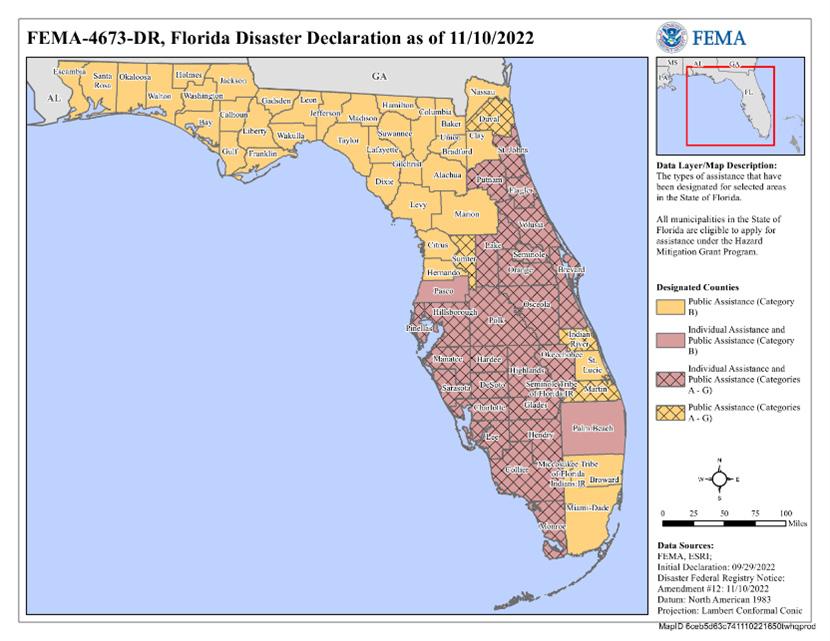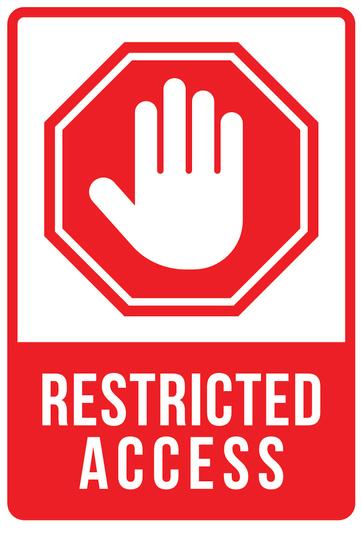
3 minute read
Hurricane Ian: Massive Systemic Improvement for a Massive Storm
Following a harrowing week of wobbling storm track projections, Hurricane Ian made landfall as a Category 5 storm on Lee County’s barrier islands on September 28th and moved northeast, engulfing Collier and Charlotte Counties with its 500-mile-wide swath, finally making an exit through St. Lucie County on September 29th. As the hurricane made its way along Florida’s northeastern shores, counties from Brevard to Duval were flooded and shaken. Ian was so large, slow, and wet that if the storm surge didn’t cause flooding, riverbanks and wetlands overflowed, swamping rural DeSoto County and urban Orange and Osceola Counties. Hurricane Ian was one of the deadliest hurricanes to hit Florida, resulting in a death toll estimated at 148, with an estimated 45 deaths attributed directly to the hurricane. Over half of those who died of causes related to Hurricane Ian drowned, and most were seniors. Hurricane Ian was particularly devastating to mobile homes and travel trailers, many having provided affordable housing to low-income and senior households.
(Death toll source: https://www.nbcnews.com/news/us-news/hurricane-ian-florida-death-toll-rcna54069)
Advertisement
• Residents of 26 counties were declared eligible for FEMA Individual Assistance and all 67 Florida counties were deemed eligible for some level of FEMA Public Assistance
• As of 11/21/22, there were 924,958 registrations for FEMA.
• Among those registered there were 136,578 with access or functional needs, a broad category to indicate any kind of special need.
• FEMA approved over $837 million in Individuals and Households Program Assistance
• Over $510 million was approved for Housing Assistance which includes temporary repairs, lodging reimbursements, and rental assistance for 27,619 homeowners and 14,746 renters.
• FEMA approved over $327 million in Other Needs Assistance which is a catchall category such as child-care, medical and dental expenses, fuel, clean-up items and other sundry needs.
• The U.S. Small Business Administration received 40,841 applications for home repair loans and approved 17,332 with over $1.2 billion in loans made.
• FEMA’s Temporary Shelter Assistance (TSA) program has paid for just under 4,000 households to stay in 417 participating hotels and motels for a cumulative room nights of 148,248.
• As of 12/21/22 there were 1,622 households checked into TSA hotel rooms.
• Just under 30% of the TSA users are homeowners and the remaining 70% are renters.
Hurricane Ian was a record-breaker in its size, intensity, and damage but the rate of response and recovery has been noticeably more rapid than for Hurricanes Irma or Michael. Ian’s extraordinary storm surge necessitated an intensive search and rescue period. Thousands of homes required muck and gut cleanups creating massive debris piles lining streets in Lee, Collier and Charlotte Counties. Along with homes in the coastal areas, mobile home parks were particularly hard hit with catastrophic damages and tragic loss of life.
Early damage assessments to housing vary by source and definition. The data in the table above is FEMA -verified by inspections. These numbers will grow considerably as inspections and assessments continue.
Damage assessments of the state’s inventory of assisted multifamily properties is ongoing. In a report to the Board of Directors of the Florida Housing Finance Corporation included an analysis of 494 damage reports from multifamily properties located in the 26 disaster declared counties. According to the report, there were

Resilience And Recovery
326 properties reporting no damage, 128 with limited damage to 258 buildings and 233 units, 32 developments with moderate damage to 159 buildings and 935 units. There were 6 developments reporting extensive damage to 89 buildings and 328 units. One unit reported catastrophic damage to 1 building and 16 units causing the displacement of 15 households. The report is preliminary, and more impacts are likely to be received.

While clean up and damage assessments got underway, home and flood insurance disparities quickly emerged. Very early estimates of insured damages exceed $10.5 billion and will definitely rise. In the shadow of this monumental insured loss, is the disproportionate number of FEMA registrants who reported having no flood or no home insurance. Only 36% of homeowners had home insurance and less than 10 percent had flood insurance.
A Speedy Response
While shelters across the state filled with thousands of survivors, FEMA stood up its Temporary Shelter Assistance hotel voucher program within days of the storm’s passing. By mid-November FEMA estimated that there remained 19,675 households with “emergent” housing situations such as residing in shelters, vehicles, tents, place of employment, place of worship or homeless. FEMA estimated that 232,949 households were in short-term housing including staying with friends or family, hotels and motels, RV’s or campers, a secondary residence, or new temporary rental housing. FEMA estimated there were 622,468 “housed,” having returned home, or moved to a new permanent rental, a FEMA provided unit, or purchased a new home.
FEMA and Florida’s Division of Emergency Management (FDEM) have quickly rolled out a number of programs, some for the first time. FEMA’s Direct Housing Programs







